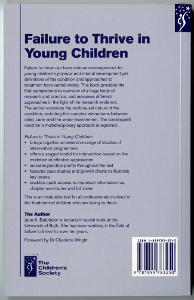|
|
Nutrition and diet
In Britain, our attitudes to food and nutrition have changed over the years, as have recommendations for what constitutes a healthy diet. These changes can be seen by looking through some of the records in The Children's Society archive.
Throughout its history, The Children's Society has always been concerned with making sure that the children in its care were healthy. Because of this, the archive contains a number of different sources of information about diet. Many of these records come from children's homes, as the homes often kept a log, or dietary diary, showing what food the children were given to eat on a specific day.
The food provided by the children's homes followed guidelines set out by The Children's Society, and these guidelines can be found amongst handbooks that provide guidance on all aspects of the running of the homes.
In the 1880s, when The Children's Society was founded, and through to the mid20th century, one of The Children's Society's greatest concerns was to make sure that children got enough to eat. Children that came into care often came from very deprived backgrounds where families were struggling against starvation. It is very common in these early records to come across families where one or more members of a family have died of starvation or are suffering from diseases caused by a lack of proper nutrition. It was very important, therefore, that the children in The Children's Society's homes received good food.
|
|
|
|
|
The dietary sheet from St. Aldhelm's Home in Frome, Somerset, in 1888 shows this early attitude to food. Among the items on the list are roast beef, Irish stew and suet pudding. Breakfast and supper consisted mostly of bread with a variety of toppings. Most telling, though, is a note at the bottom of the sheet that states there will be 'No limit as to quantity.' In order to help children who had been underfed, it must have been seen as important to allow the children to eat as much as they wanted.
In the 1930s, the suggested diet for the children in the homes appears to be similar to that given in the 1880s. Breakfast and tea still included plenty of bread and butter, and dinner often consisted of roast meats and stews. There does appear to be a bit more variety, however, with bacon, sausages and eggs sometimes suggested for breakfast, and a dessert given after dinner each day. It may well be that this increased variety reflected an increase of different types of food eaten by society as a whole.
|
|
|
By the 1970s, the food given to children differs again. The dietary diary for Bradstock Lockett Family Centre in Southport, Merseyside, shows the food eaten for dinner and tea over the course of a week. It is interesting to note that plain bread and butter have been ousted completely. Some of the meals appear to be similar to those given in earlier decades, with the children eating roast meat and steak pie, but there is also a great increase in what might be called convenience foods, such as fish fingers, baked beans and crisps.
By today's standards, the food given to children in the 1970s could be considered to be unhealthier than that given in earlier years. Many of the meals found in the Bradstock Lockett dietary diary appear to be very sugary and high in fat but this should be seen in the context of a society that had a far smaller problem with obesity than we do today.
|
|
|

|
Back cover of 'Failure to Thrive in Young Children' by Jane A Batchelor
About this image |
|
After the 1970s, The Children's Society had less to do with residential child care as it moved onto more innovative projects to help children, and so there are fewer dietary diaries to refer to. The Children's Society didn't stop providing guidance on diet and nutrition however. In the 1990s, the 'Failure to Thrive' study looked into the treatment of infants that were classed as failing to thrive; this was sometimes linked to problems with infants feeding and receiving enough nutrition.
Today, The Children's Society still works to ensure that all children are fed well. Although, as a society, we sometimes seem to be concerned only with dieting and not eating too much, there are still families out there who are struggling to ensure that their children get enough to eat. This can be seen through The Children's Society's recent 'Fair and Square' campaign, lobbying for families in poverty to receive free school meals so that all children can receive at least one healthy meal each day.
The records we have in the archive show The Children's Society's attitudes to diet and how thoughts on best practice have changed over the years. In terms of the history of child care, the records are a great resource, but they can also reflect what it was like for the population as a whole; their lifestyles, their concerns and how this affected what they were eating.
| |
|